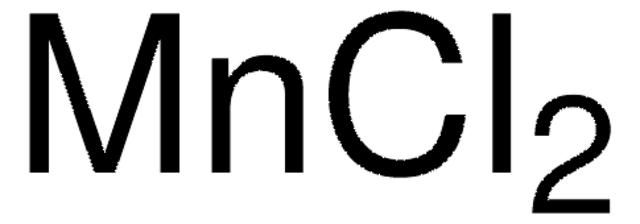Kluczowe dokumenty
208086
Zinc chloride
reagent grade, ≥98%
Synonim(y):
Dichlorozinc
About This Item
Polecane produkty
klasa czystości
reagent grade
Poziom jakości
ciśnienie pary
1 mmHg ( 428 °C)
Próba
≥98%
Formularz
powder, crystals or chunks
przydatność reakcji
reagent type: catalyst
core: zinc
pH
5 (20 °C, 100 g/L)
mp
293 °C (lit.)
ciąg SMILES
[Cl-].[Cl-].[Zn++]
InChI
1S/2ClH.Zn/h2*1H;/q;;+2/p-2
Klucz InChI
JIAARYAFYJHUJI-UHFFFAOYSA-L
Szukasz podobnych produktów? Odwiedź Przewodnik dotyczący porównywania produktów
Powiązane kategorie
Opis ogólny
Zastosowanie
ZnCl2 mayalso be used as a catalyst for the Knoevenagel condensation of aromatic aldehydes with substituted acetonitriles to form carbonyl-methylene products under solvent-free conditions. The activation of sugar cane bagasse with zinc chloride forms activated carbons for use as supercapacitor electrodes.
Inne uwagi
Informacje prawne
Hasło ostrzegawcze
Danger
Zwroty wskazujące rodzaj zagrożenia
Zwroty wskazujące środki ostrożności
Klasyfikacja zagrożeń
Acute Tox. 4 Oral - Aquatic Acute 1 - Aquatic Chronic 1 - Eye Dam. 1 - Skin Corr. 1B - STOT SE 3
Organy docelowe
Respiratory system
Kod klasy składowania
8A - Combustible corrosive hazardous materials
Klasa zagrożenia wodnego (WGK)
WGK 3
Temperatura zapłonu (°F)
Not applicable
Temperatura zapłonu (°C)
Not applicable
Wybierz jedną z najnowszych wersji:
Masz już ten produkt?
Dokumenty związane z niedawno zakupionymi produktami zostały zamieszczone w Bibliotece dokumentów.
Klienci oglądali również te produkty
Nasz zespół naukowców ma doświadczenie we wszystkich obszarach badań, w tym w naukach przyrodniczych, materiałoznawstwie, syntezie chemicznej, chromatografii, analityce i wielu innych dziedzinach.
Skontaktuj się z zespołem ds. pomocy technicznej



